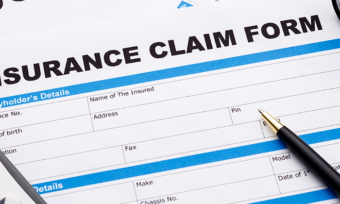Home and contents insurance is designed to cover you financially should something happen to your home and/or belongings. It consists of two components:
There are also alternative forms of the above, such as landlord insurance and renters insurance. While the details of these plans differ, they, again, consist of some combination of the above. Protection for your home and/or protection for the contents kept inside the home.
What type of home insurance you need depends on your personal circumstances. However, here are some typical scenarios:
If you own your home, you may want to take out a combined home and contents insurance policy. If you have a home loan, it will be a condition of your loan that you have house insurance.
Landlords often take out insurance that, typically, covers loss or damage to their investment property and its fixtures and fittings.
If you are a renter, you only need to consider contents insurance, or renters insurance. Renters insurance is designed for those living in a shared home, and many only require limited contents insurance for a few items.
Home insurance covers your home if it is damaged or destroyed due to an ‘insured event’. Cover varies between insurers, but it generally covers events such as:
In addition, insurers may offer benefits, such as legal liability cover (covers your liability to pay compensation if someone is injured or their property is damaged at your home) and temporary accommodation (if your property becomes unlivable because of an insured event).
When looking for the best home and contents insurance for your property, you may want to consider a variety of factors to ensure the policy stacks up against the other options available to you. Here are examples of some of the factors you may want to keep in mind when comparing policies:
To help Kiwi homeowners find the best value home and contents insurance for their needs, Canstar rates a broad range of policies based on premiums and the level of cover on offer. In addition, Canstar’s Awards recognise the home and contents insurers that offer outstanding value to consumers overall.
Your level of house insurance is called the Sum Insured. The sum insured should cover the total amount it would cost to rebuild your home in the event of a disaster or accident, it includes demolition costs, debris removal, professional fees and council fees. It doesn’t include the value of your land, so it isn’t the market or rateable value of your house or property.
Some insurance providers automatically increase their customers’ sum insured values each year in line with rising building costs. But even if your insurer provides this service, it’s still worth checking to see if you agree with their sum insured total.
There are a few methods for working out the cost to rebuild your home:
Many insurers have links on their websites through to the Cordell Sum Sure calculator. The handy tool uses Cordell’s construction costs data to give an estimate of the cost to rebuild your home. All you have to do is answer a few quick questions about your home, and the calculator does the rest.
Using average building costs per m² is a quick, rule-of-thumb way of calculating the cost of rebuilding a home.
However, while it can give a ballpark figure, it can also be very misleading. Average per m² figures don’t take into consideration the design details of a home, the true distribution of building costs and materials, or any demolition or site clearance that may be required.
Elemental estimating is the most thorough method of ascertaining the true cost of rebuilding your home. It covers every aspect of the rebuild, from plans and council permits, the specifications of each room in your home, through to your garden and landscaping, pool, external garaging, etc.
As it requires specialised industry knowledge, elemental estimating is a professional service best left to the experts. But while such a thorough report will, of course, cost more than a free online quote, it could prove invaluable if your home is of exceptional value or design.
As each home is different, there is no one-size-fits-all replacement values answer. However, by revising your sum insured figure annually to ensure you’ve enough cover to rebuild, you can rest assured that a natural disaster or accident that affects your home doesn’t also have to turn into a financial crisis.
When going through your contents, it’s easy to check off your big-ticket items. But alongside your TV, fridge, bed, espresso machine, dining table and all things expensive, it’s important to sweat the small stuff.
When you add up your towels, sweaters, plates and bowls, an electric pepper grinder, some wine glasses, sunglasses and an ornament or two, the costs can quickly climb. And it’s essential to ensure you’re not undervaluing your contents.
First, take note of all your contents. This can be time consuming, and you’ll need to go room-to-room taking note of everything, but it’s important to know what you have to cover. At the same time, it pays to take photos. For, should you lose your possessions, being able to provide some evidence of what’s been lost will make the process a lot smoother.
Once you have an idea of what you have, you need to work out the total value needed to replace them. This is the important part. You don’t want to be covered for the cost of your TV, you want to be covered for the cost of replacing your TV.
Contents insurance providers have calculators on their websites that can help. These will quickly provide you with lists of typical household items, and average values. But it’s important to edit the calculations in order to reflect your own situation. So ensure you go through the list provided, adding and editing the contents and their values to best match your own list.
Once finished, you’ll have a total estimated value. This can then be used to help set your sum insured.
The sum insured is the max possible amount you can claim on your contents insurance. Should you lose all your possessions, your sum insured will be the max amount you are able to claim from your insurer. If replacing all your items costs more than this amount, you will have to make up the shortfall yourself. So make sure you set it high enough.
It’s worth noting that if you lose all your possessions, you won’t simply be given the sum insured amount. Your insurer will only pay what is required. So if they can replace all your contents for less than the sum insured, they will. For this reason, it’s also important not to over insure. As you’ll be paying higher premiums for insurance that you won’t be able to use.
It’s also important to choose the right type of cover…
Much like home insurance, you have two choices/types of cover for contents.
While new-for-old contents insurance is more expensive than indemnity value cover, in the event of a disaster, it could save you tens of thousands of dollars. Second-hand goods depreciate in value very quickly.
And with only indemnity value cover to fall back on, if you’re faced with replacing a home’s worth of possessions, you could face a major shortfall between your insurance payout and the cost of the new items.

Home & Contents Insurance - April 29th
Arriving at your new house or apartment after a move only to discover your furniture has been broken, your glassware has been chipped, or some of your clothes have gone missing can be a disappointing and…
– Read more
Home & Contents Insurance - April 16th
It's not just the unfortunate owners of leaky homes who need to worry about dampness. Water and flood damage are some of the most common reasons for insurance claims. However insurance companies don't treat all instances…
– Read more
Home & Contents Insurance - February 28th
What is home and contents insurance? Home and contents insurance offers financial protection for your home and belongings against insured events such as fires, storms, floods and theft. Home insurance (sometimes referred to as building insurance)…
– Read more
Car Insurance - February 21st
Last year, in New Zealand, according to the Insurance Council of New Zealand (ICNZ), insurance fraud cost its members $880m. It estimates that between 5% and 10% of all claims submitted are fraudulent. If you have…
– Read more